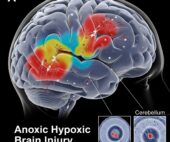For children living with Cerebral Palsy (CP), the journey often involves navigating a range of physical challenges stemming from neurological impairments. Among these, scoliosis, a sideways curvature of the spine, presents a significant concern. The interplay between CP’s impact on muscle tone, posture, and motor control can heighten the risk of developing scoliosis and influence its progression. Understanding the complexities of scoliosis in the context of CP is crucial for early detection, proactive management, and ultimately, enhancing the child’s comfort, function, and overall quality of life. This comprehensive guide explores the unique aspects of scoliosis in children with CP and delves into a spectrum of strategies and therapeutic approaches designed to address this spinal curvature effectively.
Understanding the Spinal Landscape: Scoliosis and its Connection to CP
Scoliosis in children with CP often differs from idiopathic scoliosis (where the cause is unknown) seen in typically developing children. The underlying neurological condition in CP contributes to specific characteristics and management considerations:
- The Neuromuscular Link: Why CP Increases Scoliosis Risk: The muscle imbalances and abnormal muscle tone (spasticity, hypotonia, dystonia) inherent in CP can exert uneven forces on the developing spine. This constant asymmetrical pull can lead to the gradual development of a sideways curvature. Weak core muscles, often seen in children with CP, further compromise spinal stability and increase susceptibility to scoliosis.
- Postural Predicaments: The Influence of Positioning and Mobility: Children with CP often adopt compensatory postures due to motor impairments. Prolonged periods in certain positions, particularly if asymmetrical, can contribute to the development or progression of spinal curvature. Limited mobility and difficulties with independent sitting or standing can also impact spinal alignment.
- The Speed of the Curve: Progression Patterns in Neuromuscular Scoliosis: Unlike idiopathic scoliosis, neuromuscular scoliosis associated with CP tends to progress more rapidly and can reach more severe angles, particularly during periods of rapid growth. This necessitates vigilant monitoring and proactive intervention.
- Beyond the Curve: Associated Challenges: Scoliosis in children with CP can have far-reaching implications beyond just the spinal curvature itself. It can affect breathing capacity due to restricted chest wall movement, impact sitting balance and functional abilities, cause pain and discomfort, and potentially affect the alignment of other body systems.
- The Spectrum of Severity: From Mild Curves to Significant Deformity: The degree of scoliosis in children with CP varies widely. Some may develop mild, slowly progressing curves, while others may experience more significant and rapidly advancing deformities requiring more intensive management.
A Multi-Pronged Approach: Therapeutic Interventions for Scoliosis Management in CP
Managing scoliosis in children with CP requires a collaborative effort involving a multidisciplinary team, including pediatricians, orthopedists specializing in spinal deformities, physical therapists, occupational therapists, and orthotists. The approach is tailored to the individual child’s specific needs, considering the severity of the curve, the child’s overall functional abilities, and their rate of progression:
Conservative Management: Guiding Spinal Growth
- The Foundation of Alignment: Therapeutic Positioning Strategies: Optimizing a child’s posture in sitting, lying, and during activities is fundamental. Physical and occupational therapists work closely with families to recommend and implement supportive seating systems, adaptive equipment, and positioning techniques that promote spinal alignment and minimize asymmetrical forces.
- Strengthening the Core: Targeted Exercises for Spinal Stability: Strengthening the core muscles (abdominal and back muscles) is crucial for providing spinal support and counteracting the asymmetrical forces contributing to scoliosis. Physical therapy programs incorporate exercises designed to improve core strength, postural control, and trunk stability.
- The External Support System: The Role of Orthotics (Bracing): Spinal bracing is a common conservative treatment for managing scoliosis in children with CP, particularly for moderate curves that are progressing. Custom-molded braces are designed to support the spine, prevent further curvature, and sometimes even provide some correction. The type and wear schedule of the brace are determined by the orthopedist and therapy team.
- Maintaining Flexibility: Stretching and Range of Motion Exercises: Addressing muscle imbalances and maintaining spinal flexibility are important components of scoliosis management. Physical therapy programs often include targeted stretching exercises to address tight muscles and improve range of motion in the trunk and surrounding areas.
- The Aquatic Advantage: Hydrotherapy for Spinal Support and Movement: The buoyancy of water can provide a supportive environment for strengthening exercises and improving spinal mobility with reduced gravitational forces. Hydrotherapy can be a valuable adjunct to land-based therapy.
Surgical Intervention: Addressing Significant Curvature
- When Curves Progress: Considerations for Spinal Fusion Surgery: For children with severe and progressive scoliosis that significantly impacts function, breathing, or causes pain, surgical intervention may be considered. Spinal fusion surgery involves permanently joining two or more vertebrae to stabilize the spine and prevent further curvature.
- Guiding Growth: Growing Rods and Other Surgical Techniques: In younger children with significant scoliosis, surgeons may utilize growing rod techniques. These involve implanting rods that can be lengthened periodically as the child grows, allowing for some spinal growth while controlling the curvature. Other surgical approaches may also be considered based on the individual case.
- A Collaborative Approach to Surgery: Pre- and Post-operative Management: The decision for surgery is made through careful consideration by the medical team and the family. Pre-operative physical and occupational therapy can help optimize the child’s strength and functional abilities. Post-operatively, therapy focuses on regaining mobility, managing pain, and adapting to the changes in spinal alignment.
Holistic Strategies: Enhancing Overall Well-being
- Pain Management Strategies: Addressing Discomfort Associated with Scoliosis: Scoliosis can sometimes cause pain and discomfort. A comprehensive pain management approach may involve medication, therapeutic positioning, gentle exercises, and other modalities as recommended by the medical team.
- Optimizing Respiratory Function: Addressing Breathing Challenges: Significant scoliosis can restrict chest wall movement and impact breathing. Respiratory therapy techniques and strategies to promote optimal lung expansion may be incorporated into the management plan.
- Promoting Functional Independence: Adapting Activities of Daily Living: Occupational therapists play a crucial role in helping children adapt their daily activities to accommodate their spinal curvature and maximize their independence in areas such as dressing, bathing, and self-feeding.
- Nutritional Considerations: Supporting Bone Health: Adequate nutrition, particularly calcium and vitamin D intake, is important for maintaining bone health, especially in children with scoliosis who may undergo bracing or surgery. Dietary guidance from a registered dietitian may be beneficial.
Empowering Families: Practical Support at Home
Consistent support and proactive strategies at home are essential for complementing the therapeutic interventions and promoting the best possible outcomes for children with CP and scoliosis:
- Partnering with the Professionals: Open Communication and Collaboration: Maintain open communication with the therapy team and orthopedist. Understand the home exercise program, brace wearing schedule, and positioning recommendations, and actively participate in their implementation.
- Creating a Supportive Environment: Adapting the Home for Optimal Positioning: Ensure the child has appropriate seating and lying surfaces that promote spinal alignment. This may involve using supportive cushions, wedges, or specialized equipment.
- Consistency is Key: Integrating Exercises and Positioning into Daily Routines: Incorporate the recommended exercises and positioning strategies into the child’s daily activities to reinforce their benefits.
- Observing and Reporting: Monitoring for Changes and Communicating Concerns: Regularly observe the child’s posture, any signs of increasing curvature, or reports of pain, and promptly communicate any concerns to the medical team.
- Promoting Activity within Limitations: Encouraging Safe Movement and Engagement: Encourage the child to participate in safe and appropriate physical activities that promote strength and flexibility without exacerbating the scoliosis.
- Fostering a Positive Body Image: Addressing Emotional Well-being: Scoliosis can impact a child’s self-esteem and body image. Provide emotional support, focus on their strengths, and help them understand that scoliosis is just one aspect of who they are.
- Connecting with Others: Joining Support Networks: Connecting with other families navigating scoliosis in the context of CP can provide invaluable emotional support, shared experiences, and practical advice.
For further information and resources related to managing the complexities of Cerebral Palsy, including musculoskeletal challenges like scoliosis, we encourage you to explore the comprehensive information available at: CP Family Help
Looking Towards a Straighter Path: Collaborative Care for Enhanced Well-being
Managing scoliosis in children with Cerebral Palsy is an ongoing process that requires a dedicated and collaborative approach. Through early detection, consistent conservative management, and when necessary, timely surgical intervention, combined with comprehensive support at home, we can work towards minimizing the impact of scoliosis, optimizing spinal alignment, and ultimately enhancing the comfort, function, and overall quality of life for these children, allowing them to navigate their world with greater ease and confidence.
Frequently Asked Questions: Understanding Scoliosis Management in CP
Why are children with Cerebral Palsy at a higher risk of developing scoliosis compared to typically developing children?
The increased risk is primarily due to the neurological impairments associated with CP. Muscle imbalances, abnormal muscle tone (such as spasticity or hypotonia), and difficulties with postural control can exert uneven forces on the developing spine, leading to the gradual formation of a sideways curvature.
What are the primary goals of scoliosis management in children with CP?
The main goals are to prevent the progression of the spinal curve, maintain or improve posture and balance, reduce pain and discomfort, optimize respiratory function, and enhance the child’s overall functional abilities and quality of life.
At what point is bracing typically recommended for scoliosis in a child with CP?
Bracing is often recommended for children with CP who have moderate and progressing scoliosis, typically with a Cobb angle between 20 and 40 degrees. The decision to brace depends on several factors, including the severity of the curve, the child’s age and growth potential, and their functional abilities.
At what point is bracing typically recommended for scoliosis in a child with CP?
No, surgery is not always necessary. Many children with scoliosis associated with CP can be effectively managed with conservative treatments such as therapeutic positioning, strengthening exercises, and bracing. Surgery is typically considered for severe and progressive curves that significantly impact function, breathing, or cause pain despite conservative efforts.
What role does physical therapy play in managing scoliosis in children with CP?
Physical therapy is a crucial component of scoliosis management. Therapists develop individualized exercise programs to strengthen core muscles, improve postural control, maintain spinal flexibility, and teach proper body mechanics. They also play a vital role in optimizing positioning and promoting functional movement.
👉 Fill out our FREE Consultation Form today to speak with a legal expert. Your case could make a difference.




